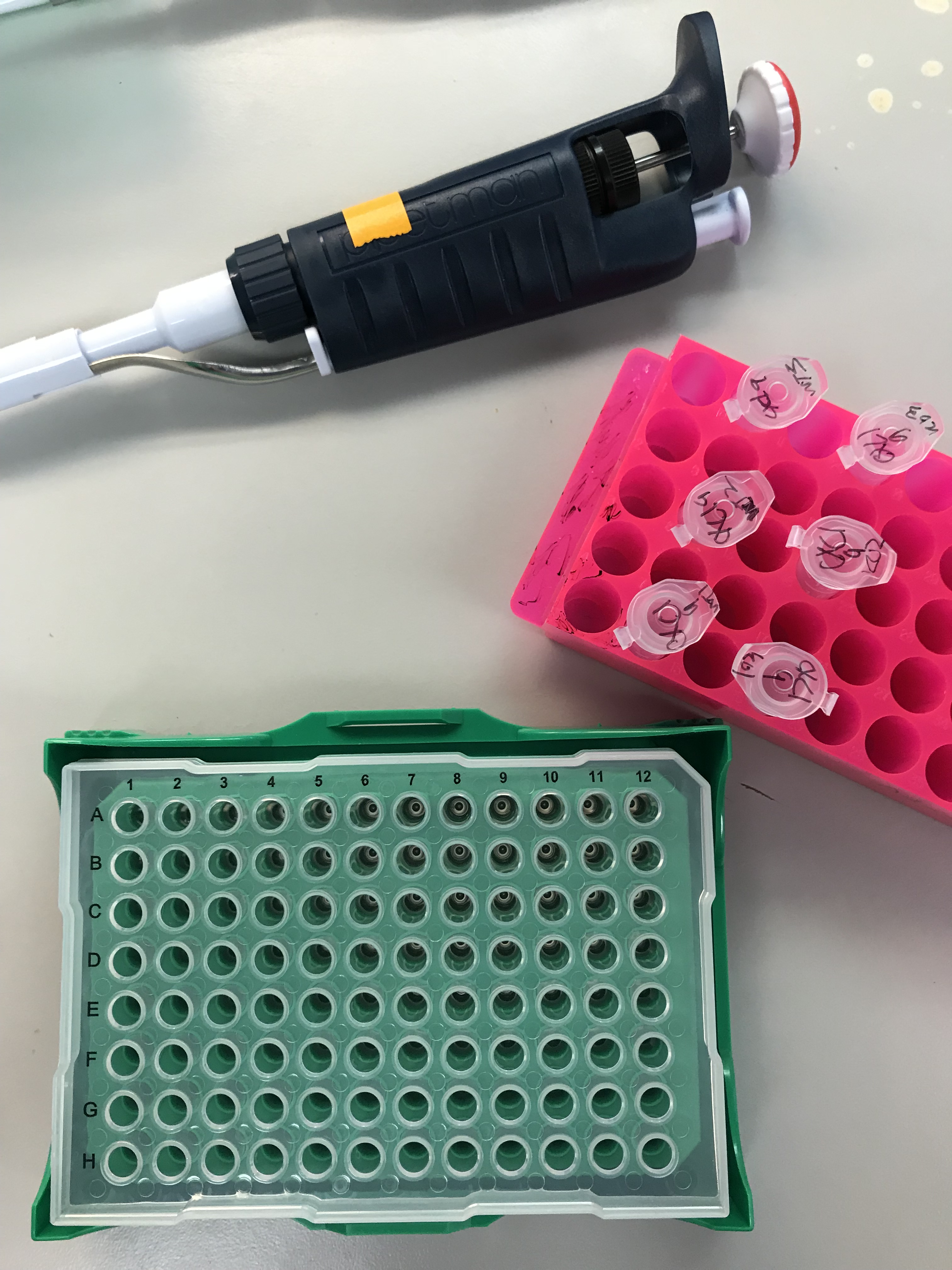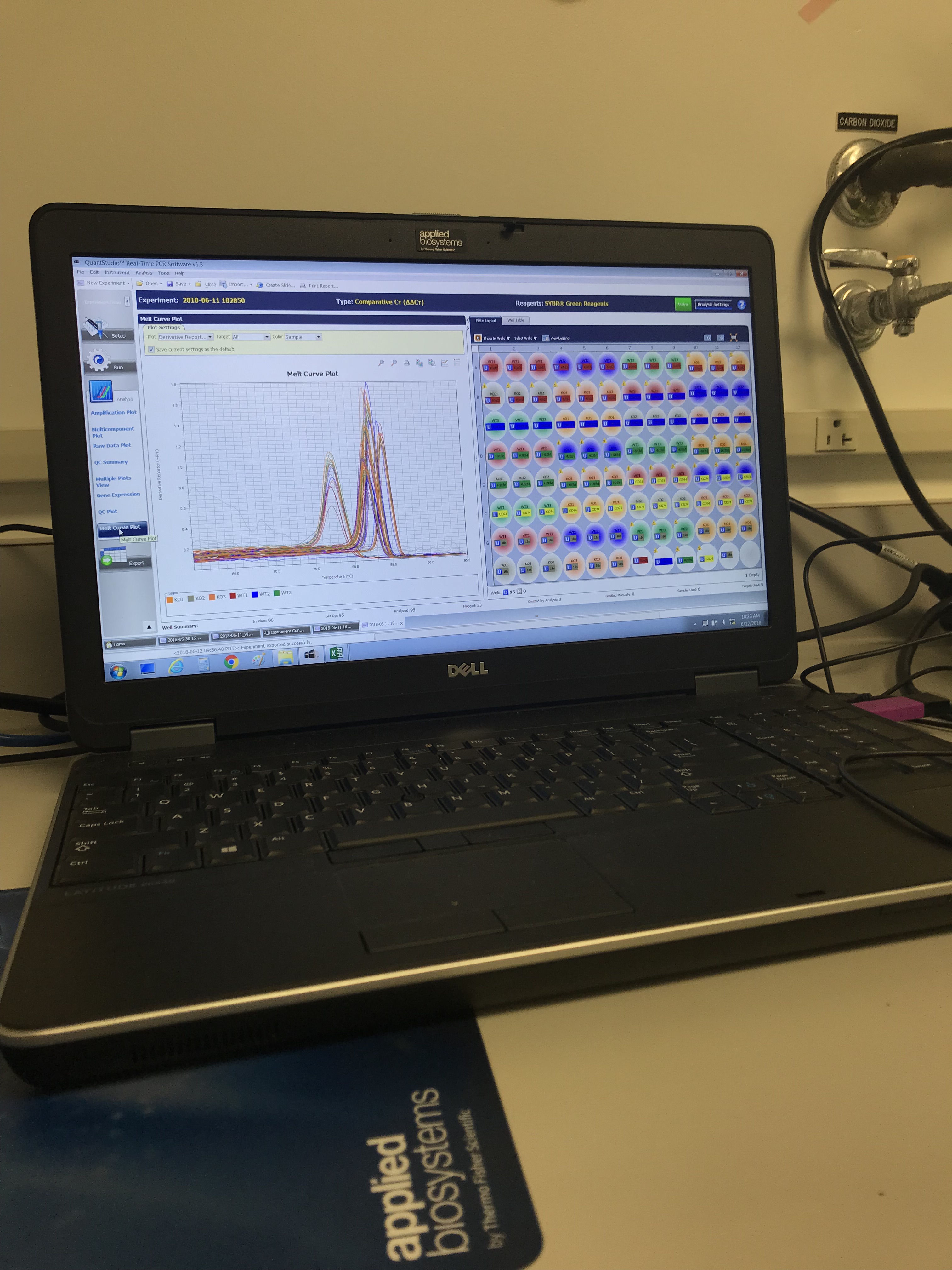The first two weeks of my internship have been incredible! I am interning at Sanford Burnham Prebys Medical Discovery Institute in La Jolla, CA. The mission of Sanford Burnham Prebys (SBP) is to “conduct world-class collaborative research dedicated to finding cures for human disease, improving quality of life, and educating and training the next-generation of scientists, thus creating a legacy for its employees, partners, donors, and community.” SBP researches various medical entities, including cancer therapeutics, neuroscience, stem cells, and immunity issues. One of the things I love most about SBP is that they’re a non-profit, meaning that the institute is purely focused on funding life-saving research and not turning a profit.
I am interning in Dr. Peter Adams’ lab, which focuses on cellular senescence as it relates to cancer. What is senescence? Senescence is when a cell stops dividing and enters a state of cell arrest, ceasing division. Since cancer is the uncontrollable growth of cells, the presence of senescence can prevent cancer from growing or even forming. I had not heard of senescence prior to my internship, but am fascinated by the occurance and am excited to delve deeper into the process. I am specifically investigating the role that a specific histone methylation has in senescence functioning.
When I was deciding what to do this summer, I knew that I wanted to find a research internship focused on cancer. While there are numerous internship programs run through universities around the country, they are extremely competitive, especially as a rising sophomore with little college-level biology coursework. I researched individual labs at research institutes, hospitals, and universities in parts of the country I was interested in living for the summer and emailed the primary investigator (PI) on the project about my interest in research experience for the summer. While majority of the labs I contacted did not take undergraduate students or found students through the previously mentioned internship programs, I received a reply from the Adams lab about the possibility of joining them this summer. I had a Skype interview with one of the lab members, who explained the details of the project and asked me about my prior research experience. After discussing with the PI, I was invited to intern in the Adams lab for the summer!
My advice for other students looking for internships in scientific research is to reach out to specific labs. I have found that it is best to contact PIs directly about their research project, as it shows initiative and interest on behalf of the student.
My first week at SBP was wonderful, but also overwhelming. Every lab has a unique dynamic to it, and it takes some time to get used to that specific environment. All of the lab members were extremely friendly and willing to show me new assays and experiments. I have to admit, I was a bit intimated by the intelligence of the lab members, as most of them hold a PhD in their field and have many years of experience in biomedical research. It helped to remind myself of my intern status and that it was okay to not know some things – I am still learning this new language of biology!
I learned how to extract RNA directly from mouse liver samples and how to isolate DNA from plasmids via a mini prep protocol. My supervisor, Corey, also went through DNA replication with me and explained the specifics of the project. I attended several research presentations- some from SBP researchers and others from academic faculty from universities across the country.
This summer, I expect to find myself frustrated. I hope to be confused about some of the biological pathways we are employing or unsure of the correct buffer to use for an assay. While these circumstances can be challenging, they are also the times in which we learn and find achievement in skills previously unknown to us. I am beyond excited to learn all that I can this summer and to experience a new lab and research project.



